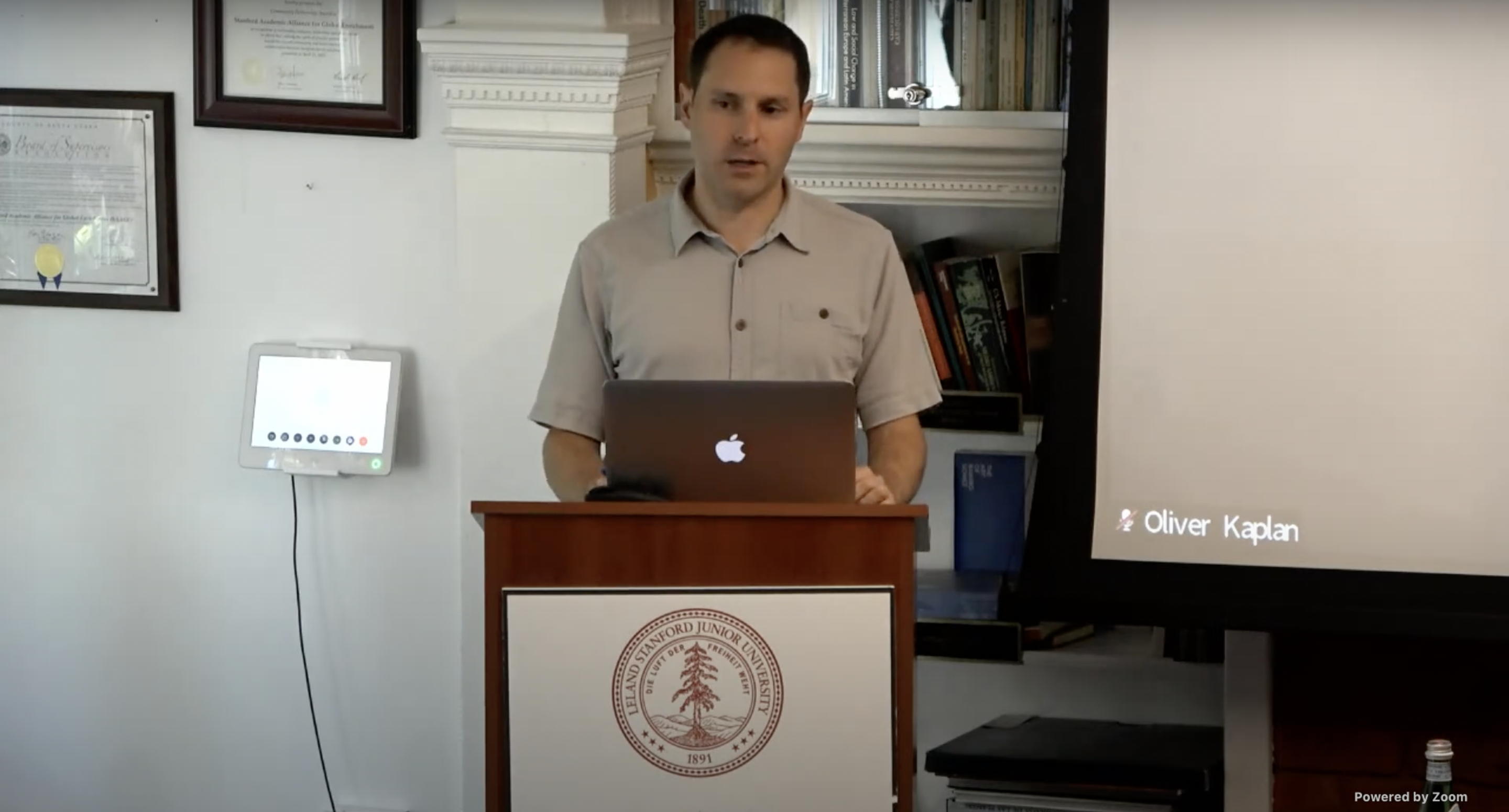“One of the community members told me, memorably, that ‘united we’ll move ahead, and alone… we’re screwed,’” said University of Denver international studies associate professor Oliver Kaplan Ph.D. ’10 at his talk, “Resisting War: How Communities Protect Themselves,” on Friday.
Kaplan was referring to what he described as the extraordinary ways communities organize themselves against armed violence. As part of his research for his book “Resisting War: How Communities Protect Themselves,” which began as part of his doctoral dissertation here at Stanford, Kaplan looked into how unarmed civilians protected themselves in armed conflicts in Colombia.
Kaplan discussed his findings at the event, titled after his book, which took place as part of the Friday Lecture series from Stanford’s Center on Latin American Studies at the Bolivar house. “It’s a pleasure to be back at the Bolivar House,” Kaplan said at the start of the event, who explained that he spent much time here: “This was one of my academic homes… I really enjoyed the community here.”
Kaplan said his work was primarily motivated by puzzlement: “You might not believe this, and for a time I didn’t believe it either.” He said he was shocked that “unarmed civilians would have a chance of surviving the challenging war zones of civil conflict especially when they’re facing heavily armed combatants.”
But from the field, Kaplan saw examples of the possibility and efficacy of unarmed civil resistance.
Kaplan gave the example of La India and San Tropel: two small villages about a hundred miles north of Bogotá, that in 2001 and 1998, respectively, had two very different encounters with the same paramilitary group.
Kaplan said in San Tropel, paramilitary forces executed 12 woodcutters and discarded their bodies in the Carare river. Three years later, he added, the same group prepared to kill 11 residents of La India but met with the newly formed Asociación de Trabajadores Campesinos del Carare (ATCC), a self-described peasants workers association who through non-violent resistance saved all 11 of them. The ATCC went on to grow into a larger collective and win the Right Livelihood Award, an international humanitarian award dubbed “the alternative Nobel Prize” originally by the BBC, for its work, according to Kaplan.
“My argument is that levels of civilian organization are key for explaining the different responses and behaviors of these communities,” Kaplan said.
Kaplan said there are two main types of civil organization in these regions affected by violence: “Formal Peace Communities,” including the ATCC, and “Informal Peace Communities,” religious, indigenous and tribal groups, for example, that have all adapted to become centers of collective action.
Local village councils, called juntas, Kaplan added, have been crucial players in promoting peace which Kaplan showed is visible statistically. According to a slide he presented at the event, homicide rates, measured using data collected by the Colombian non-profit CINEP, decreased by 25% with high junta council presence.
But what about armed civil resistance? Kaplan explained that there have been few examples of effective armed resistance following La Violencia, the decade-long Colombian civil war between 1948 and 1958. Armed forces can become paramilitary and this can cause communal fracturing, according to Kaplan.
“A lot of the groups armed nominally in self-defense ended up being the Autodefensas Unidas de Colombia [a paramilitary group],” he said.
He said paramilitary groups can be organized better militarily than resistance groups. He explained that organized non-violence can outweigh violence because arms invite an organized armed response, which communities inevitably lose to: “[The ATCC] realized that [the community members] were mainly farmers; maybe one or two had been military veterans… they’d immediately be blown away.”
The stories of these communities contain important lessons, Kaplan said. As the world changes, the question of wealthy western communities’ preparedness comes to mind.
“We have a lot we can learn from places like Colombia, Mexico, and Ukraine…it’s maybe a precarious situation,” he said. “Learning about how to promote pro-peace norms here [in the U.S.] and learn about non-violence is very important.”
“Peace is an everyday process,” Kaplan concluded, quoting one of the community leaders in Colombia. “These kinds of lessons have to be repeated, processed, relearned again: if not, these challenging situations return.”
